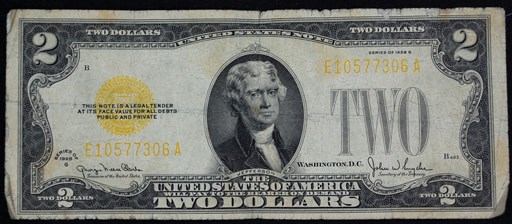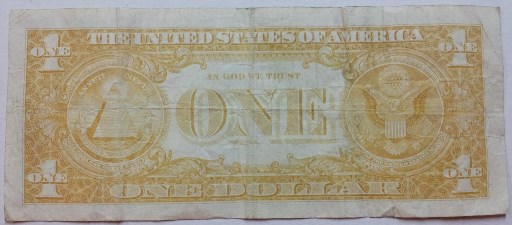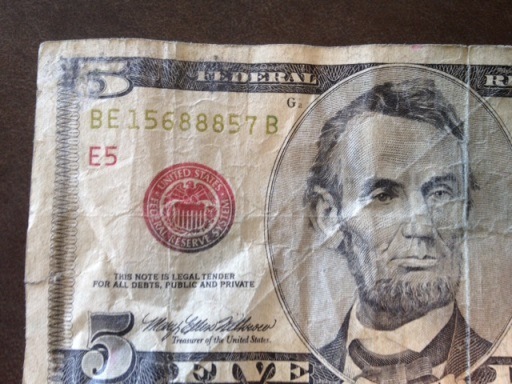Beware Of Strangely Colored Seals & Serial Numbers
– There are lots of legitimate errors that can happen during the printing process as it relates to color. Ink can run low and that results in a very light print. Ink can also be applied too thickly. That is referred to as over-inking. Then there are of course ink smears. However, very few authentic errors relate to inked seals or serial numbers that have changed color. You have to remember that every color is made up of other colors. There are people out there who know enough about chemistry to change the colors of ink on paper money. We don’t know how it is done, but apparently it is pretty easy because a lot of people are doing it.

To put things simply, there is no such thing as a yellow seal $2 or $5 bill. Red seal two and five dollar legal tender notes are frequently the victims of chemists. People can take a circulated red seal $2 bill that is normally worth $3 and treat it so the seal turns yellow. Sadly, some less informed buyers will think that it is an authentic error, and they will spend $50 on it. Some red seals naturally turn to yellow due to environmental damage. That could be something as simple as getting washed with a load of clothes or going for a swim in a pool. Not all yellow seals are created on purpose.

Here is another chemically altered note. We see these a lot. It is the famous yellow back one dollar bill. The backs of one dollar bills should be green. The ones that are yellow have either been treated to turn yellow, or they have been environmentally damaged. A lot of people think their yellow back $1 bill is authentic because the serial numbers on the front stayed green. Once again, we don’t know it is done. However, the people who know the chemistry to change colors on money do it in a way that they can specifically target certain sections of the bill.

This is a strange color change we saw recently. It is on a modern $5 bill. The seal color has changed to half red. The serial number is starting to take on a gold color. Very rarely we will see green seal notes where the green color has turned a slight blue color. Those color change errors can be authentic and are recognized by the grading service. That is the only color change that will command a premium and be accepted as an error. Let me repeat that. If you have a note and the seal color has changed from black or green to a more blue color, then that error could be authentic. All other color change “errors” are man-made or the result of environmental damage and they should be avoided.


